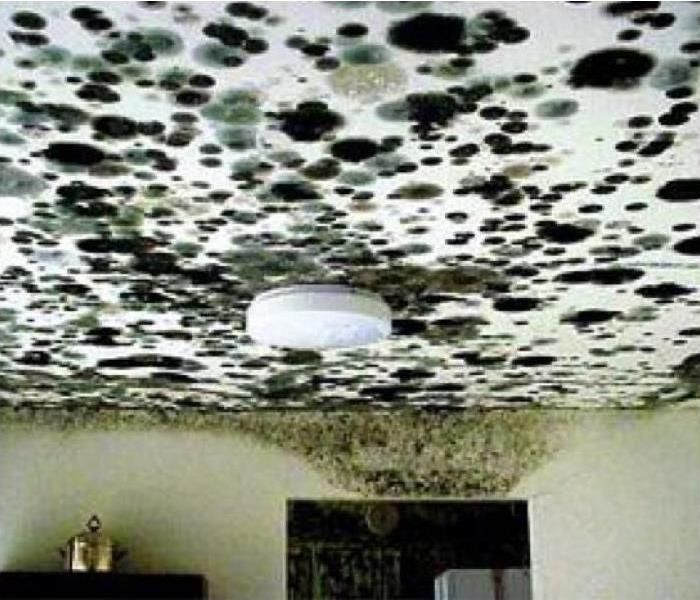Quick Tips from SERVPRO of South Tampa on Preventing Mold Growth
3/23/2021 (Permalink)
The rainy season has arrived, and with that the opportunity for mold growth presents itself. Due to this, we recommend that you call SERVPRO of South Tampa at the first signs of any moisture or growth. If you have discovered mold in your Tampa area home or office, we are here to help.
How mold gets into a house or building:
Mold and fungal spores occur naturally outdoors, where fungi are the earth’s most important recyclers. Indoors, mold needs moisture to grow; it becomes a problem only where there is water damage, elevated and prolonged humidity, or dampness. Common sources in the Tampa area of excessive indoor moisture that can lead to mold problems include:
* flooding from surface waters (i.e., overflowing streets) or from severe storms;
* roof leaks from damaged or missing roofing materials, blocked gutters;
* storm-driven rain through window frames, exterior walls or door assemblies;
* leaking pipes, sewer back-ups or overflows;
* damp crawl spaces due to a high water table or poorly managed rainwater drainage; and
* condensation on cold surfaces.
How to prevent mold growth:
The key to preventing and stopping indoor mold growth is to control excessive moisture and condensation. Keeping susceptible areas in the home clean and dry is critical. In general, mold will not grow indoors without water, dampness or excessive moisture.
Three main factors contribute to condensation of water on building surfaces:
* Relative Humidity: Condensation occurs when the air is saturated with water and it cannot hold any more moisture. For example, steam generated from bathroom showers or from cooking can fill up the air with moisture, which will then condense into drops of water on cooler surfaces, such as mirrors and windows. Where possible, localized sources of humidity, such as clothes dryers, should be directly vented to the outdoors. To lower indoor humidity during warm, humid weather, air conditioners should be used.
* Temperature: Warm air holds more moisture than cold air. Condensation occurs when warm humid air comes into contact with a cold surface and the moisture condenses into water. This can often be seen on single-pane windows, where water condenses and then runs down, causing the wood frames and sills to rot and the wall under the windows to blister.
* Poor Ventilation: Indoor humidity can build up if there is not enough ventilation and exchange of indoor and outdoor air. Where there is little or no air movement, such as behind dressers and cabinets, surfaces can remain cooler than surrounding areas, which can lead to increased condensation and mold growth. It is recommended that the area is ventilated and the occupants use exhaust fans (vented to the outdoors) to remove moisture from high-humidity areas, particularly in bathrooms, kitchens, and laundry areas. Furniture should be moved slightly away from walls so that air can freely pass behind it. Air should be allowed to circulate between rooms and regularly ventilate to remove humid air. Fans should be used as needed.
Other things that can be done are to clean and repair gutters regularly, make sure the ground slopes down and away from the home’s foundation and keep air conditioner drip pans and drain lines clean. In addition, in air-conditioned buildings in hot and humid climates, vinyl wall coverings on the interior sides of exterior walls should not be used, as these materials can trap moisture, resulting in mold growth underneath them.
In the case of floods or leaking pipes, any standing water should be promptly removed and water-damaged materials should either be dried out and cleaned, or removed and replaced. Porous materials that are wet for more than 48 hours are likely to produce mold growth and should be discarded. In instances where the water damage is extensive, it is recommended that you call SERVPRO of South Tampa at (813) 839-6633, so that we may assist you in preventing growth after water damage, or to remove the mold if it is already an issue.






 24/7 Emergency Service
24/7 Emergency Service